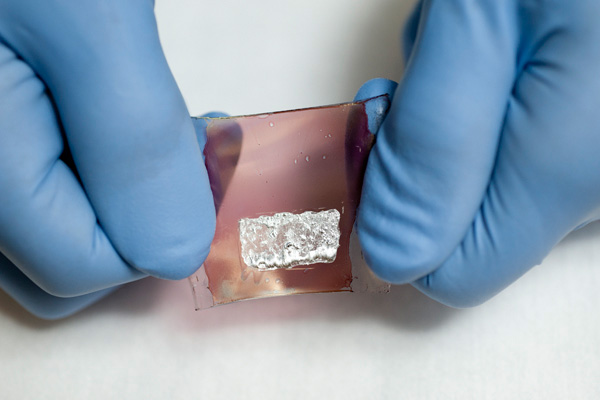 Photos by L.A. Cicero
Photos by L.A. Cicero
Stanford researcher Zhenan Bao is on the quest to develop "super skin" that could help us detect disease and other biological functions.
Bao's built a flexible sensor that is so sensitive to pressure it can feel a fly graze down on it. Bao is now working to have this artificial skin be able to detect chemicals and other biological functions that would otherwise go unnoticed. The skin will eventually be solar powered, using super stretchy and durable polymer solar cells that generate electricity.
"You can imagine a robot hand that can be used to touch some liquid and detect certain markers or a certain protein that is associated with some kind of disease and the robot will be able to effectively say, 'Oh, this person has that disease,'" Bao told the Stanford Report. "Or the robot might touch the sweat from somebody and be able to say, 'Oh, this person is drunk.'"
